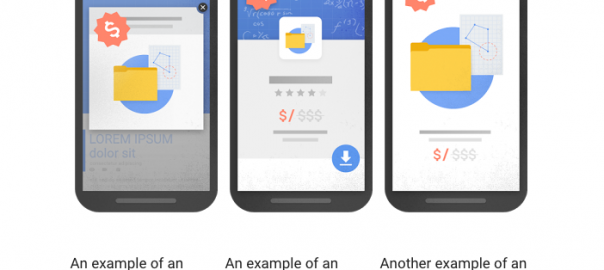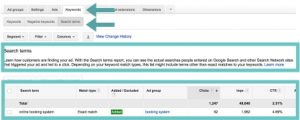As of January 10, Google will penalize mobile sites with intrusive pop-up ads. Google announced this update last August, and said it would take effect on January 10. The Webmaster Central Blog stated,
Pages that show intrusive interstitials provide a poorer experience to users than other pages where content is immediately accessible. This can be problematic on mobile devices where screens are often smaller. To improve the mobile search experience, after January 10, 2017, pages where content is not easily accessible to a user on the transition from the mobile search results may not rank as highly.
What is an Interstitial and What Qualifies as “Intrusive”?
On the internet, an interstitial is a page that appears before the expected content. Interstitials that qualify as “intrusive,” and that will penalize websites include:
- Pop-ups that cover the main content immediately after the user navigates to a page from the search results, or he/she is looking through the page.
- Standalone interstitials that have to be dismissed before accessing the main content.
- A layout with an above-the-fold portion of the page that appears similar to a standalone interstitial, inlining the original content below the fold.

Features that will not harm a page’s organic ranking include:
- Interstitials necessary for a legal obligation, like cookie usage or for age verification.
- Login dialogs on sites where the content is not publicly indexable.
- Banners that use a reasonable amount of screen space and are easy to dismiss.

Exceptions to the Rule?
Google has acknowledged two circumstances wherein the penalty may not apply.
First, Google has specified that pop-up ads will cause a decline in rankings when they, “cover the main content immediately after the user navigates to a page from the search results, or he/she is looking through the page.” John Mueller later confirmed that exit-intent popup ads won’t trigger this penalty.
What we’re looking for is really interstitials that show up on the interaction between the search click and going through the page and seeing the content. So that’s kind of the the place we’re looking for those interstitials. What you do afterwards like if someone clicks on stuff within your website or closes the tab or something like that then that’s kind of between you and the user.—John Mueller
For example, when you start to exit this page, you will probably see this:

This offer appears when users complete an action that signals an intent to leave the site—usually moving the cursor toward the top, left corner, or “mousing out”—aka “exit intent.” It does not prevent the user from viewing expected content on first entering the page, however, so Google isn’t concerned.
Secondly, the original Google announcement reminds marketers that the change is just one of 200+ ranking signals. The new interstitials signal isn’t going to de facto penalize authoritative sites with really great content that meet the user’s need.
The intent of the search query is still a very strong signal, so a page may still rank highly if it has great, relevant content.—Doantam Phan
How to Respond to the Intrusive Interstitials Update
If your site has non-essential interstitials that delay the user’s access to content, it’s time to reevaluate that strategy. If your pop-up produces a lot of good leads, and you don’t see rankings slipping at first, it will be tempting to ignore the warnings. But if the short history of SEO has proven anything, it’s that Google gets what Google wants. Resistance has consistently proven futile.
A/B test some alternatives to discover what works best for you and your audience:
- Switch to an exit-intent pop-up.
- Switch to a small banner that’s easy to close.
- Insert a compelling CTA near the top of the content.
Google wants to provide the best user experience, and users hate pop-ups. If a site’s content is truly exceptional, you may not notice a slip in rankings right away. But as the competition gets rid of their intrusive interstitials and continues to improve their content, Google’s favor will change sides.
Leaning into Mobile in Advance of Mobile-First Indexing
Google continues to prove their dedication to a mobile-first marketplace, and to the user experience. Users have spoken—they like mobile and they don’t like pop-ups—and Google is responding.
And remember, Google is testing and planning to roll out mobile-first indexing. That means that while this update currently only affects mobile rankings, it’s about to affect desktop rankings as well.
Start reviewing the pop-ups on the brand’s site on a mobile device to see if they’re about to set the rankings back. If so, set up a few banners, a few exit interstitials, and a few content CTAs to start testing which engages your audience the best.
Digital & Social Articles on Business 2 Community(59)







